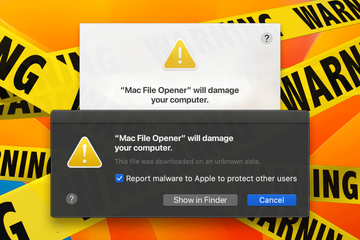- What is Mac File Opener and why is it harmful?
- Mac File Opener malware distribution vectors
- The robust macOS security logic unleashed
- “Mac File Opener will damage your computer” message manual removal for Mac
- Get rid of “Mac File Opener will damage your computer” pop-up virus in web browser on Mac
- Get rid of “Mac File Opener will damage your computer” pop-up virus using Combo Cleaner removal tool
An alert that says ‘Mac File Opener will damage your computer’ is a prime example of macOS flagging an app as potentially unwanted for good reason.
What is Mac File Opener and why is it harmful?
Upon cursory view, the application called Mac File Opener can produce a positive impression overall. It claims to bridge the gap when the system lacks support of certain formats and thus fails to load some types of files. This seems like useful stuff, but with a caveat. The actual activity of the program in question is at odds with the shiny mission it purportedly fulfills. Rather than allow a user to open various “exotic” objects in a scenario of limited or missing software compatibility, it triggers a brainwashing attack by flooding the computer with deceptive system maintenance recommendations or fake virus reports to promote its own commercial version or affiliated junk apps. This explains why macOS responds to the presence of this program through pop-up messages saying, “Mac File Opener will damage your computer”.
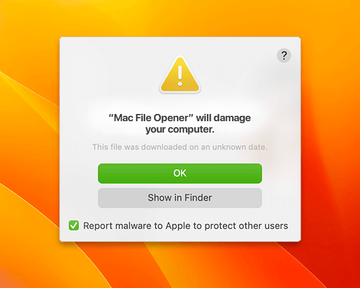
Mac File Opener malware distribution vectors
Another dodgy hallmark of this application is the way it arrives at Mac computers. Contrary to a commonplace software installation story, it’s hardly ever a matter of an informed decision. The shady setup lurks inside ostensibly normal installers that seem to push nothing but harmless software, when they are in fact bundles of several items some of which are not nearly as innocuous. The catch is that most people are okay with the default (express) mode in such situations, only to give the green light to something dubious quietly slipping inside. When up and running, Mac File Opener starts littering around the system by dropping a handful of daemons, adding itself to the Login Items, and assuming elevated permissions to access sensitive areas, such as web browser data and computer storage. Plus, it tends to generate untrustworthy notifications about an unsatisfactory system health condition or even virus warnings, trying to hoodwink the user into downloading more scareware.
“Mac File Opener will damage your computer” alert malware may re-infect your Mac multiple times unless you delete all of its fragments, including hidden ones. Therefore, it is recommended to download Combo Cleaner and scan your system for these stubborn files. This way, you may reduce the cleanup time from hours to minutes.
Download Now Learn how Combo Cleaner works. If the utility spots malicious code, you will need to buy a license to get rid of it.The robust macOS security logic unleashed
Let’s zoom back into the super-noxious “Mac File Opener will damage your computer” alerts. Unlike the above-mentioned manipulative quirks of the app under scrutiny, these particular messages reflect a genuine system response to malware. macOS comes with several great security features that identify dangerous software and block it from being executed. These include Apple’s proprietary file quarantine and antivirus technology known as XProtect, as well as the Gatekeeper component foiling applications that don’t pass notarization checks. Whenever the combination of these protection layers spots potentially unwanted code and automatically keeps it from running, the user is shown a corresponding pop-up dialog.
Since Mac File Opener engages persistence mechanisms to launch its binaries iteratively without user involvement, the alert about possible damage is displayed off and on. Sadly enough, it doesn’t provide a one-click option to remove the misbehaving application. The only buttons are “Show in Finder” and “Cancel”, with the latter simply postponing the next emergence of the pop-up warning. The former, though, can give some clues in regards to the cleanup, but deleting the files it reveals in Finder is not enough to fix the problem. The user will additionally need to rectify a series of system settings modified without consent, such as configuration profiles, startup programs list, LaunchAgents, LaunchDaemons, and browser preferences. The complete walkthrough to address the Mac File Opener issue is described in the following paragraphs.
“Mac File Opener will damage your computer” message manual removal for Mac
The steps listed below will walk you through the removal of this malicious application. Be sure to follow the instructions in the specified order.
Expand the Go menu in your Mac’s Finder bar and select Utilities as shown below.
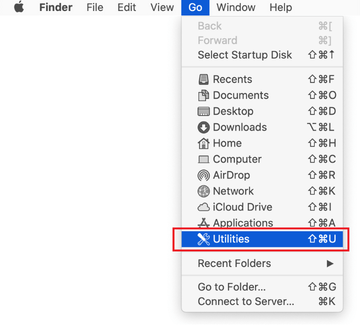
Locate the Activity Monitor icon on the Utilities screen and double-click on it.
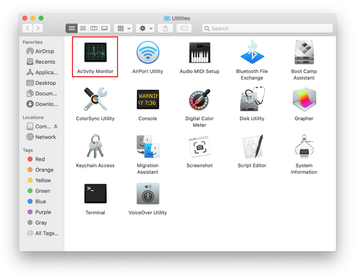
In the Activity Monitor app, look for Mac File Opener or another process that appears suspicious. To narrow down your search, focus on unfamiliar resource-intensive entries on the list. Keep in mind that its name isn’t necessarily related to the way the threat is manifesting itself, so you’ll need to trust your own judgement. If you pinpoint the culprit, select it and click on the Stop icon in the upper left-hand corner of the screen.
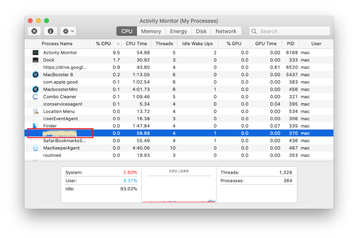
When a follow-up dialog pops up asking if you are sure you want to quit the troublemaking process, select the Force Quit option.
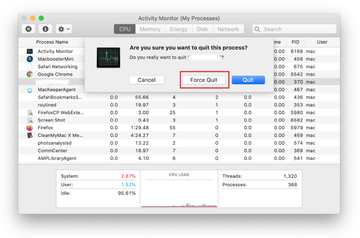
Click on the Go menu icon in the Finder again and select Go to Folder. You can as well use the Command-Shift-G keyboard shortcut.
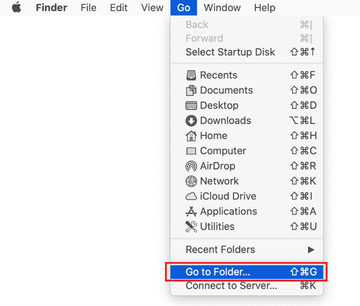
Type /Library/LaunchAgents in the folder search dialog and click on the Go button.
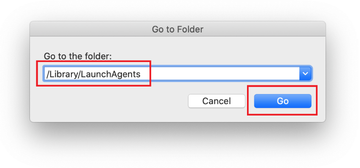
Examine the contents of the LaunchAgents folder for dubious-looking items. Be advised that the names of files spawned by malware may give no clear clues that they are malicious, so you should look for recently added entities that appear to deviate from the norm.
As an illustration, here are several examples of LaunchAgents related to mainstream Mac infections: com.pcv.hlpramc.plist, com.updater.mcy.plist, com.avickUpd.plist, and com.msp.agent.plist. If you spot files that don’t belong on the list, go ahead and drag them to the Trash.
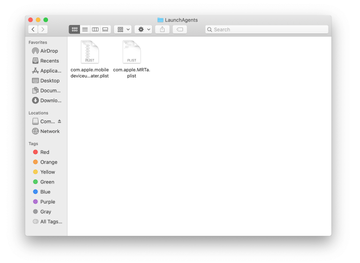
Use the Go to Folder lookup feature again to navigate to the folder named ~/Library/Application Support (note the tilde symbol prepended to the path).

When the Application Support directory is opened, identify recently generated suspicious folders in it and send them to the Trash. A quick tip is to look for items whose names have nothing to do with Apple products or apps you knowingly installed. A few examples of known-malicious folder names are UtilityParze, ProgressSite, and IdeaShared.
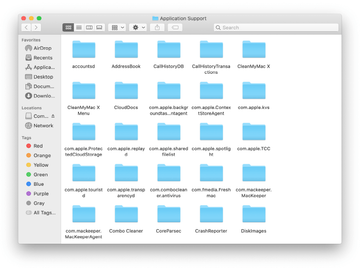
Enter ~/Library/LaunchAgents string (don’t forget to include the tilde character) in the Go to Folder search area.
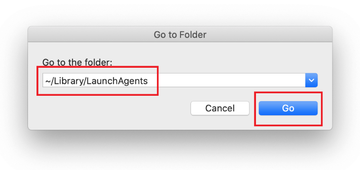
The system will display LaunchAgents residing in the current user’s Home directory. Look for dodgy items related to Mac File Opener pop-up virus (see logic highlighted in subsections above) and drag the suspects to the Trash.
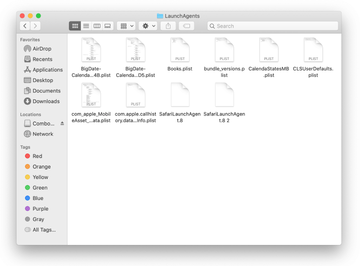
Type /Library/LaunchDaemons in the Go to Folder search field.
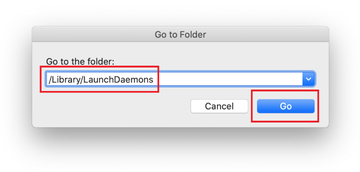
In the LaunchDaemons path, try to pinpoint the files the malware is using for persistence. Several examples of such items cropped by Mac infections are com.pplauncher.plist, com.startup.plist, and com.ExpertModuleSearchDaemon.plist. Delete the sketchy files immediately.
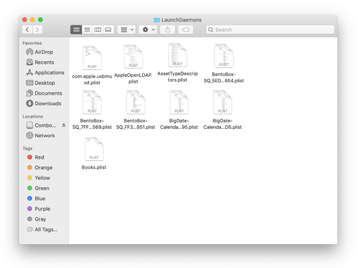
Click on the Go menu icon in your Mac’s Finder and select Applications on the list.
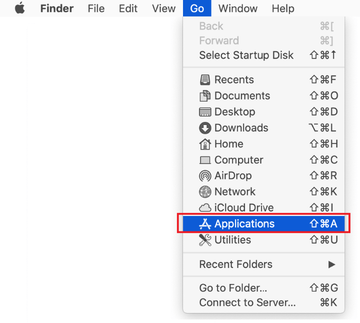
Find the entry for an app that clearly doesn’t belong there and move it to the Trash. If this action requires your admin password for confirmation, go ahead and enter it.

Expand the Apple menu and select System Preferences.
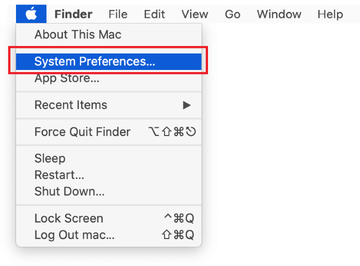
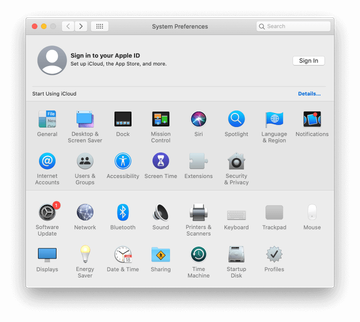
Proceed to Users & Groups and click on the Login Items tab.
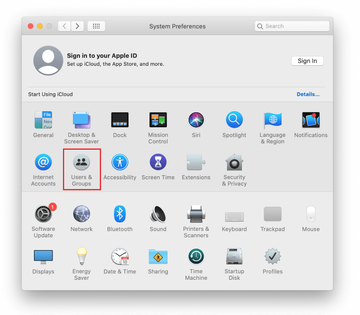
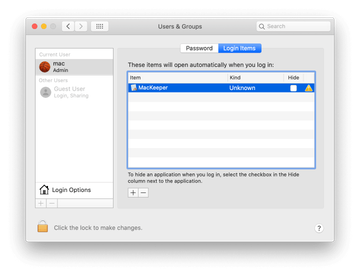
Now select Profiles under System Preferences. Look for a malicious item in the left-hand sidebar. Several examples of configuration profiles created by Mac adware include TechSignalSearch, MainSearchPlatform, AdminPrefs, and Safari Settings. Select the offending entity and click on the minus sign at the bottom to eliminate it.
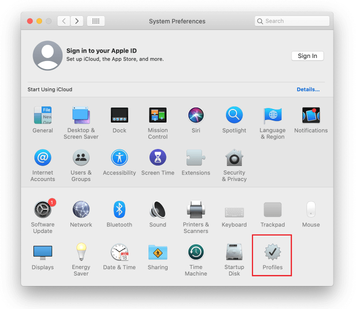
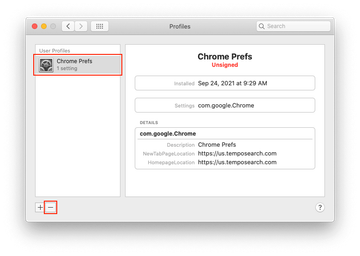
Get rid of “Mac File Opener will damage your computer” pop-up virus in web browser on Mac
To begin with, the web browser settings taken over by the “Mac File Opener will damage your computer” virus should be restored to their default values. Although this will clear most of your customizations, web surfing history, and all temporary data stored by websites, the malicious interference should be terminated likewise. The overview of the steps for completing this procedure is as follows:
- Remove “Mac File Opener will damage your computer” virus from Safari
- Open the browser and go to Safari menu. Select Preferences in the drop-down list
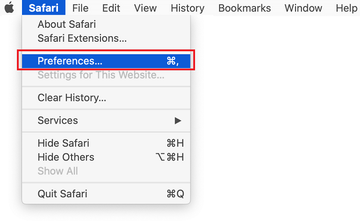
- Once the Preferences screen appears, click on the Advanced tab and enable the option saying “Show Develop menu in menu bar”.
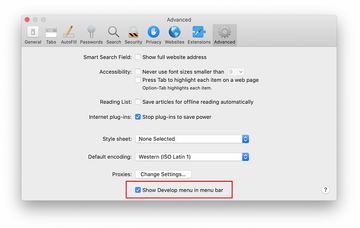
- Now that the Develop entry has been added to the Safari menu, expand it and click on Empty Caches.
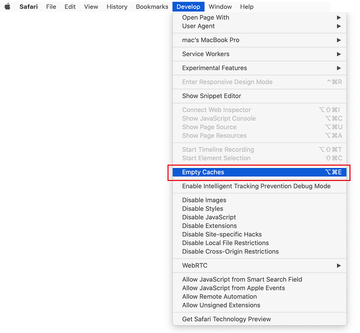
- Now select History in the Safari menu and click on Clear History in the drop-down list.
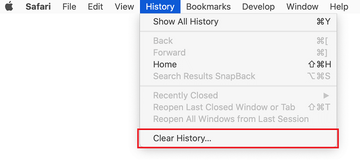
- Safari will display a dialog asking you to specify the period of time this action will apply to. Select all history to ensure a maximum effect. Click on the Clear History button to confirm and exit.

- Go back to the Safari Preferences and hit the Privacy tab at the top. Find the option that says Manage Website Data and click on it.

- The browser will display a follow-up screen listing the websites that have stored data about your Internet activities. This dialog additionally includes a brief description of what the removal does: you may be logged out of some services and encounter other changes of website behavior after the procedure. If you’re okay with that, go ahead and click on the Remove All button.
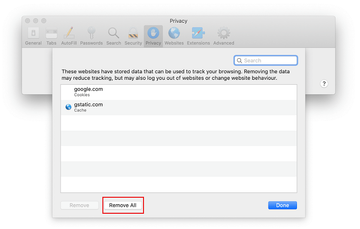
- Restart Safari
- Open the browser and go to Safari menu. Select Preferences in the drop-down list
- Remove “Mac File Opener will damage your computer” virus in Google Chrome
- Open Chrome, click the Customize and control Google Chrome (⁝) icon in the top right-hand part of the window, and select Settings in the drop-down
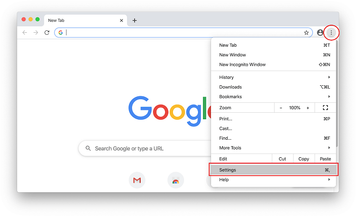
- When on the Settings pane, select Advanced
- Scroll down to the Reset settings section.
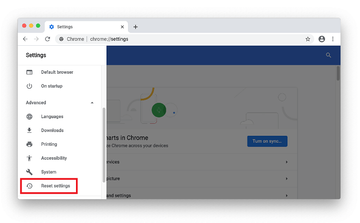
- Confirm the Chrome reset on a dialog that will pop up. When the procedure is completed, relaunch the browser and check it for malware activity.
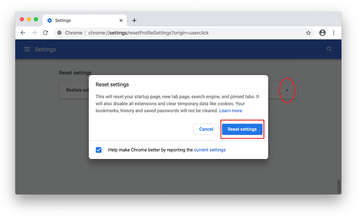
- Open Chrome, click the Customize and control Google Chrome (⁝) icon in the top right-hand part of the window, and select Settings in the drop-down
- Remove “Mac File Opener will damage your computer” malware from Mozilla Firefox
- Open Firefox and go to Help – Troubleshooting Information (or type about:support in the URL bar and press Enter).
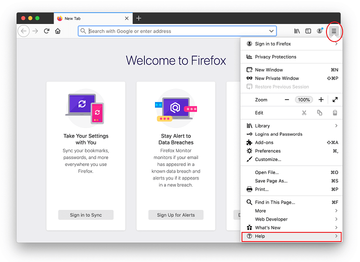
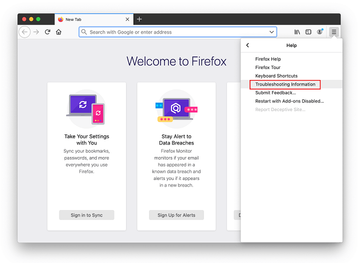
- When on the Troubleshooting Information screen, click on the Refresh Firefox button.
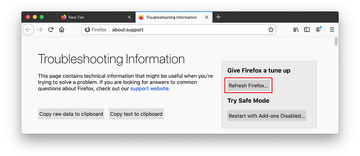
- Confirm the intended changes and restart Firefox.
- Open Firefox and go to Help – Troubleshooting Information (or type about:support in the URL bar and press Enter).
Get rid of “Mac File Opener will damage your computer” pop-up virus using Combo Cleaner removal tool
The Mac maintenance and security app called Combo Cleaner is a one-stop tool to detect and remove “Mac File Opener will damage your computer” pop-up virus. This technique has substantial benefits over manual cleanup, because the utility gets hourly virus definition updates and can accurately spot even the newest Mac infections.
Furthermore, the automatic solution will find the core files of the malware deep down the system structure, which might otherwise be a challenge to locate. Here’s a walkthrough to sort out the “Mac File Opener will damage your computer” pop-up issue using Combo Cleaner:
Download Combo Cleaner installer. When done, double-click the combocleaner.dmg file and follow the prompts to install the tool onto your Mac.
By downloading any applications recommended on this website you agree to our Terms and Conditions and Privacy Policy. The free scanner checks whether your Mac is infected. To get rid of malware, you need to purchase the Premium version of Combo Cleaner.
Open the app from your Launchpad and let it run an update of the malware signature database to make sure it can identify the latest threats.
Click the Start Combo Scan button to check your Mac for malicious activity as well as performance issues.
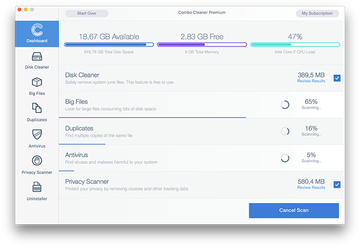
Examine the scan results. If the report says “No Threats”, then you are on the right track with the manual cleaning and can safely proceed to tidy up the web browser that may continue to act up due to the after-effects of the malware attack (see instructions above).
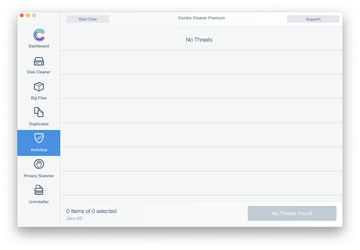
In case Combo Cleaner has detected malicious code, click the Remove Selected Items button and have the utility remove “Mac File Opener will damage your computer” pop-up threat along with any other viruses, PUPs (potentially unwanted programs), or junk files that don’t belong on your Mac.
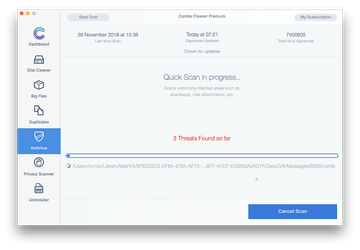
Once you have made doubly sure that the malicious app is uninstalled, the browser-level troubleshooting might still be on your to-do list. If your preferred browser is affected, resort to the previous section of this tutorial to revert to hassle-free web surfing.
